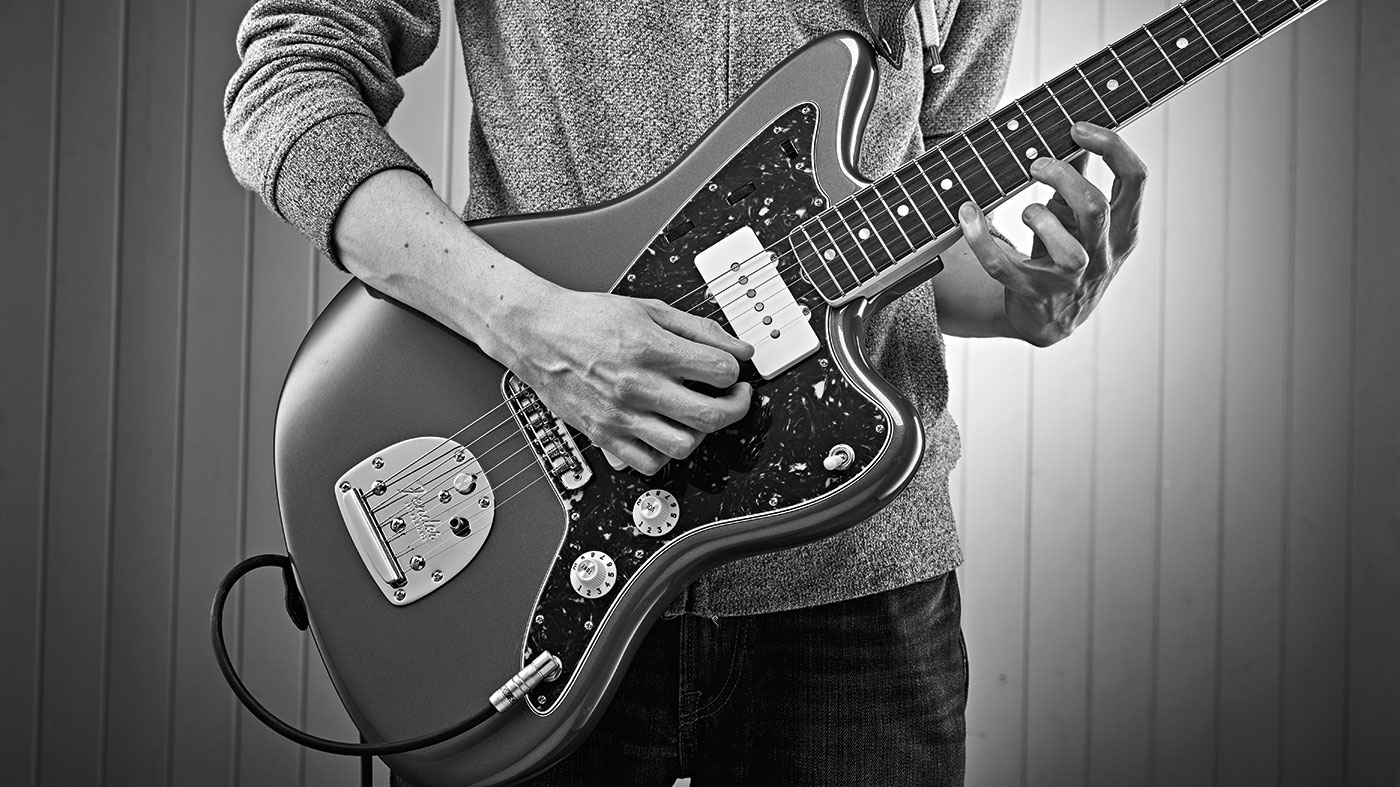Master guitar solo position shifts in 20 minutes
Break your bad habits

If you ever find yourself boxed in with standard scale patterns, our guide to better position shifts will have you shooting around the fretboard in no time.
A common trap to fall into when improvising is sticking to a selection of favourite shapes in fixed positions. Sure, learning scale boxes does help with the learning process, but it can also lead to a feeling that you’re stuck in one area of the fretboard - and subsequently you may be scared to explore the farther reaches.
However, with a deeper understanding of scales and arpeggios, you can start to connect seemingly unrelated shapes, rather like a jigsaw puzzle. This is an ultimately empowering process that will take your solos to new heights and you’ll soon be playing licks covering every note on the guitar.
This month’s tab examples are designed to bust you out of those limiting ‘static’ shapes and get you connecting the positions. As you play through the tab, take note of the finger numbers (shown next to the notes in the traditional notation) - choosing the right fingers helps you make slicker shifts with the smallest amount of movement possible.
1. Minor scale runs
Here, we’re playing a long E minor scale all the way from open position to the 12th fret. Slides connect each ascending seven-note pattern but note that you’ll use a different sliding finger when you descend the lick. This will help you to view the fretting pattern, rather than the finger pattern - a useful memory aid.
2. Pentatonic shift
Here, the humble A minor pentatonic/blues scale is stretched out over three octaves in a Paul Gilbert-style shred lick. This fresh take on a much used scale should fire you up with creative new ideas as you cross the fretboard instead of using a box shape. When you’re comfortable with the lick, try changing which string or finger you slide on.
3. Stretch and slide workout
This challenging Fmaj7 arpeggio is played along the length of the strings covering 12 frets. The target fret and finger is constantly changing so you’ll need to keep moving your eyes to keep up with the shifts. It’s best to start this one slower than the marked tempo initially in order to memorise the finger changes.
Want all the hottest music and gear news, reviews, deals, features and more, direct to your inbox? Sign up here.
4. Neoclassical-style lick
This Yngwie-style lick moves an A minor arpeggio and A harmonic minor scale through a challenging set of fretting-finger combinations. Your ultimate goal here isn’t speed, but execution and accuracy. Your fretting fingers will need to stretch out more than the previous licks, so approach the two bars as separate ideas initially.
Practice Plan
- Two minutes: Play through one exercise slowly
- Three minutes: Increase the tempo in 30-60 second bursts
- Try the other examples
Try out this month’s tab examples, treating them as pure technique exercises to begin with. As you get into the swing of things, try to identify how the shapes link together and which finger combinations and slides give the best changes. When you’re more confident, try simplifying one or two of the licks and jamming over a backing track (or with a band if you’re in one!).
Total Guitar is Europe's best-selling guitar magazine.
Every month we feature interviews with the biggest names and hottest new acts in guitar land, plus Guest Lessons from the stars.
Finally, our Rocked & Rated section is the place to go for reviews, round-ups and help setting up your guitars and gear.
Subscribe: http://bit.ly/totalguitar




